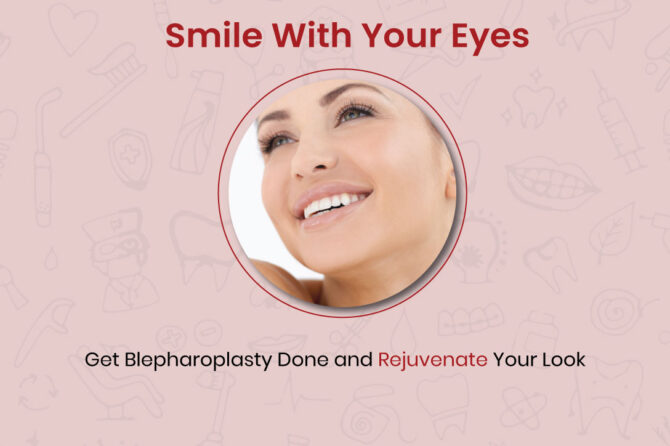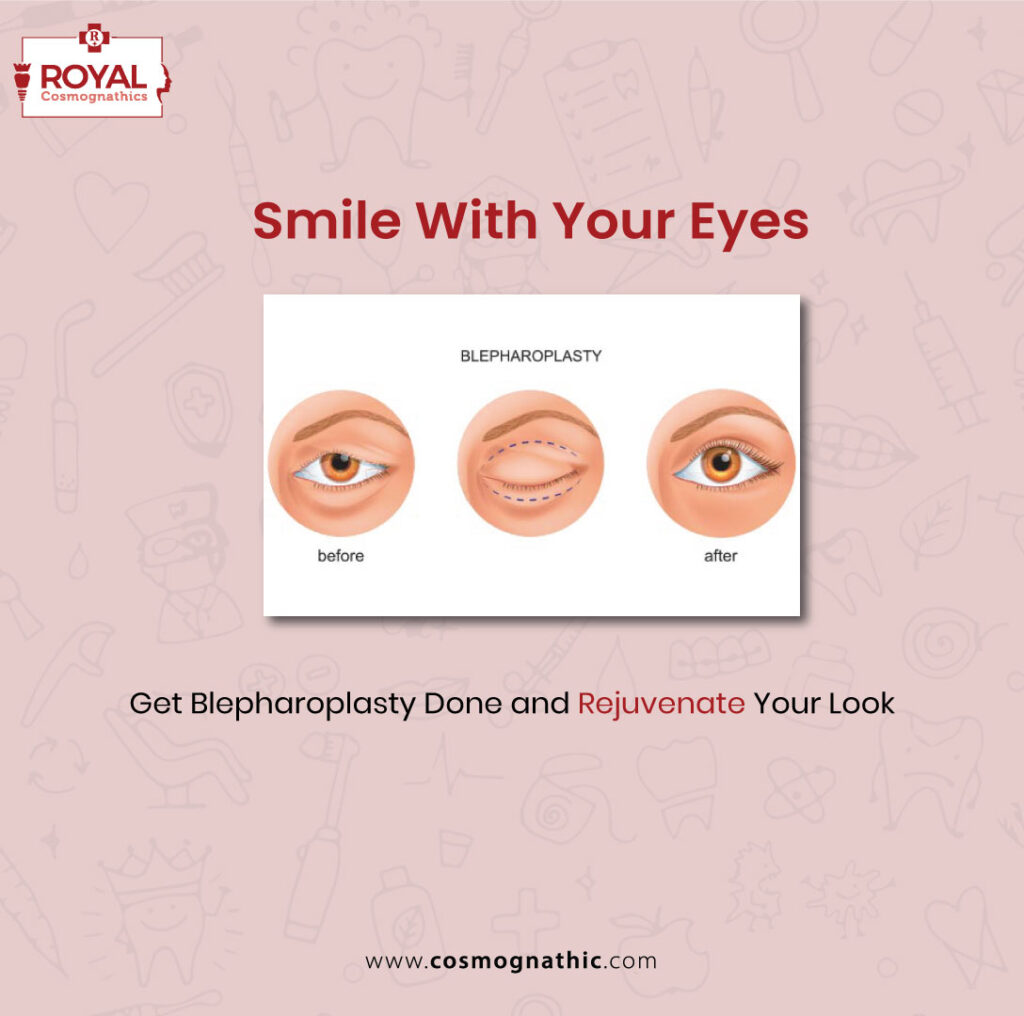
Upper eyelid correction | Blepharoplasty
Eyelid bags surgery is referred to as Blepharoplasty. Eyes and eyelids are the central features of the face that are seen by others and by patients every time. We also converse by looking from eye to eye. This explains the importance of eyelids and their surgeries and also the popularity of products designed for use on eyebrows, upper lids, lower lids and eyelashes.
What is Blepharoplasty?
Belpharoplasty is a surgery to remove excess skin(and sometimes muscle or fat) from upper or lower eyelids. It is the general term for correcting defects, deformities and disfigurations of the eyelids either for functional reasons, cosmetic reasons or both. The most common reason is cosmetic in which excess skin and fat are removed and/or repositioned to give a more pleasing appearance The main aim is to improve the appearance of the area surrounding the eyes and to improve vision obscured by dropping eyelids.
Aging leads to stretching of eyelids and weakening of the muscles supporting them . As a result excess fat may gather above and below the eyelids causing sagging eyebrows, droopy upper lids and bags under eyes. This makes the person look older. Severely sagging skin around the eyes can reduce the side vision especially the upper and outer parts of our field of vision . Belpharoplasty can reduce or eliminate these vision problems and make your eyes appear younger and more alert.
Indications of Blepharoplasty or Eyelid surgery
- Baggy or droopy upper eyelids
- Excess skin of upper eyelids that interferes with your peripheral vision.
- Redundant and lax eyelid skin
- Dermatitis of the redundant skin
- Preaponeurotic fat herniation that result in functional visual symptoms or cosmetic concerns in affected patients
Upper eyelids blepharoplasty may be performed in traditional fashion , using stainless steel instruments or may be modified with radiosurgery incisional techniques, tissue adhesives have also been used for skin closure.
Risk Factors involved in eyelid surgery procedure:
- Aging
- Sun exposure
- Smoking
- Inflammatory disease affecting (Thyroid orbitopathy, blepharochalasis Syndrome)
- Chronic Lid swelling/oedema associated with systemic disease or allergy.
- Family history.
Precautions to be taken post surgery:
- Avoid exposing the scars to sun
- Keep incisions clean with soap and water ans inspect daily for signs of infection.
- Use cold saline compresses for the first 24 hours for comfort and to reduce swelling and brushing.
- Generally. Hair can be shampooed anytime after surgery
- To wait for at least 2 weeks before wearing contact lenses
- Patients will have sensitivity to sunlight , wind and other irritants so take proper covers for the same



Leave a reply